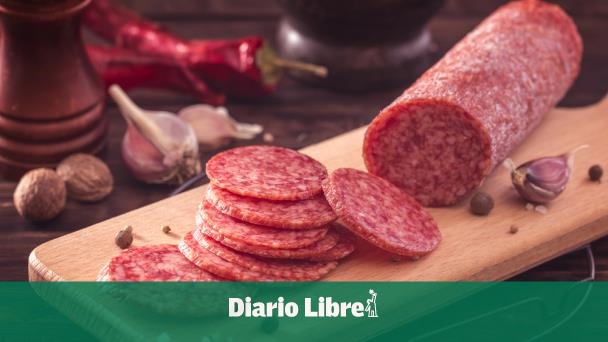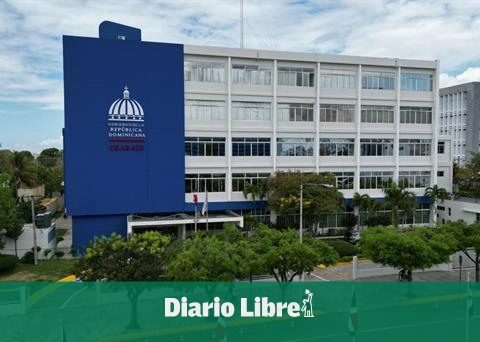So far in 2022, products such as onions, oil, salami and red beans have registered increases in their prices of between 10 and 66%.
Salami registers increases of 66.88%, if the most popular product in the country is taken. In January it cost, on average, 121.14 pesos per pound; in September the same product is sold at 202.17 pesos, for a relative variation of 66.88%.
According to the data published by Pro Consumidor on prices in supermarkets, a pound of processed chicken was sold, on average, at 69.50 pesos in January, now in September it costs 81.73 pesos, for a variation of 17.59%.
Also, the average price of a 128-ounce gallon of soybean oil from a popular brand was around 638.14 pesos in January; now it is shipped to the consumer at 741.06 pesos, for a difference of 16.12%. While the 64-ounce one was shipped at 341.32 pesos and is currently sold at 377.48 pesos, for an increase of 10.59%.
On the other hand, the 800-gram packages of red beans were sold at an average price of 138.99 pesos; of 400 grams was located at 66.56 pesos. In September, the same brand of 800-gram red beans averaged 147.39 pesos, 6.04% more than in January; that of 400 grams went to 73.33 pesos, for an increase of 10.17%.
In addition, 30-unit egg cartons were shipped at the beginning of the year at 226.42 pesos and, according to data from Pro Consumidor, they are currently sold at 232.15 pesos, registering an increase of 2.53%.
In relation to prices, consulted consumers recommend the government to inform where they sell the products that have registered drops in their prices so that they can pay the “chelitos”.
“I would like the government to say or cite the places where the articles they are mentioning have been downloaded because, according to what I see, they have gone up in an exaggerated way. Everything is much more expensive, but, since they say yes, that they have gone down, I would like them to say where it is, what the places are,” said Alberto Nivar.
He gave as an example that a month ago he bought a package of hygienic cups that cost him 50 pesos. “And now I had to buy the same package of glasses and it’s costing me 90 pesos. That is, a difference of practically double.”
On her side, Jennifer Méndez told Free Journal that everything has risen “The price of loaves, the price of fruits; for example: a mesh of passion fruit is costing 160 pesos; the snack chips, from 229 pesos (which cost) less than a year ago, went on to cost 360 pesos”.
He indicated that a liter of milk cost 55 pesos and now, to obtain the same product, you have to pay 90 pesos. A package of five sausages, which cost 169 pesos, went, in less than a year, to 209 pesos.
“The cost of merchandise rises because the costs of raw materials, production, and transportation rise, all of that rises, but whoever works in that company making those products does not get a raise, but neither does the consumer. So, a basic basket is around 50 or 60,000 pesos and the base salary in Santo Domingo is 18,000 pesos or 19,000 pesos,” said the citizen consulted.
He added that a year ago the rice he bought cost 30 pesos and “now it is 40, 45 and even 50 pesos, a pound of rice.”
Recently, the director of Pro Consumidor, Eddy Alcántara, said that several products would have dropped in price from August to September of this year.
The explanation that the experts have offered is that the international panorama generated by the pandemic and, later, by the war between Russia and Ukraine, has caused increases in raw materials for the production of food and other products, and maritime transport, among others. others.
What the Ministry of Economy says
Through the Report on the situation of the inflation international and national 2022-2023, the Ministry of Economy, Planning and Development (Mepyd) points out that the Russia-Ukraine war and its effects on the markets, the prolongation of the disruptions in the supply chains, the inflationary pressures and the conditions Financial institutions around the world have intensified the slowdown in global growth.
In this context, indicates the document, it is expected that the inflation peak in mid-2022, before falling later, although remaining at high levels even after the crisis subsides and monetary policy conditions are further tightened.
He explains that in the middle of the year the restrictions on exports imposed in several countries as a result of the war between Ukraine and Russia stand out as the main driver of the significant increase in prices, especially of cereals.
It stands out that the prices of agricultural commodities in the international market continue to show signs of stabilization. Soybean oil, soybeans and corn recorded cumulative increases of 25.3% and 21.0% and 6.6% in August.


















